Bald Eagles of Broward County, Florida
› ARCHIVED Pembroke Pines OBSERVATIONS & PHOTOS FROM PRIOR NESTING SEASONS
›
ARCHIVED 2012-2013 NESTING SEASON OBSERVATIONS AND PHOTOS
December 31-- First egg has probably hatched
December 31-- First egg has probably hatched
|
Administrator
|
As ground observers without the luxury of a nest camera, we must infer what is going on out of sight in the nest by paying attention to the behavior of the visible adults. At the time of hatching we have noted that the female begins to brood higher up in the nest, tenting the chicks under her body and wings. We also have seen the other parent visit the nest and peer down into it. Of course the best indication is when prey is brought to the nest and is fed to the eaglets, still out of sight. The parents will continue to take turns brooding the young, just as they do during incubation. The female tends to spend the night on the nest while the male takes a position near the nest.
We estimated the date of egg laying based upon two observations. On November 25 Jill reported that the female was sitting rather high on the nest but later disappeared, possibly deep into the nest. On November 29, we reported that at 8:45 and 10:30 AM one adult was sitting very deep in nest, incubating. We therefore estimated that the first egg was laid between NOV 25 & 29. Arbitrarily, we estimated the eggs were laid on or about November 27, meaning that the expected hatch date for first egg would be 35 days later, or approximately JAN 01 2013. We last observed an adult incubating deep in the nest on December 27, when we also saw an exchange of incubation duties. Mike documented that the male visited the nest on December 29 but did not exchange incubation duties. He thought it possible that the mate made a prey drop, but he did not see any prey to confirm this. We have never witnessed any prey drops during incubation, as the adults appear to forage for themselves after exchanging incubation duties. If there was indeed a prey drop, this would be an indication that there was one or more eaglets in the nest back on December 29. Today we noted a distinct change in the behavior of the pair of Bald Eagles. This morning we found the female continuously sitting high on the nest, changing position and looking down into the nest. 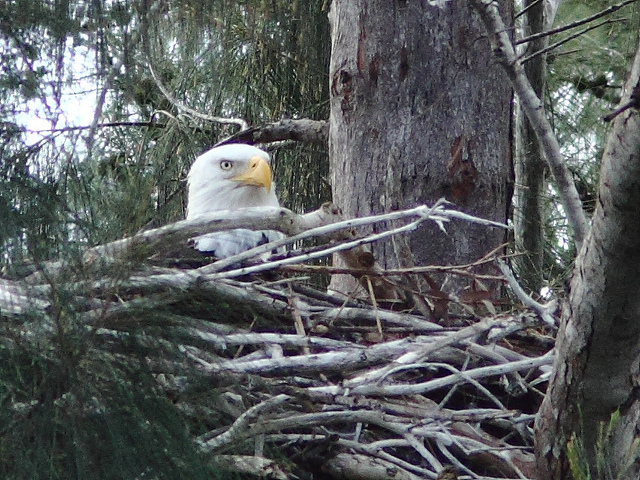 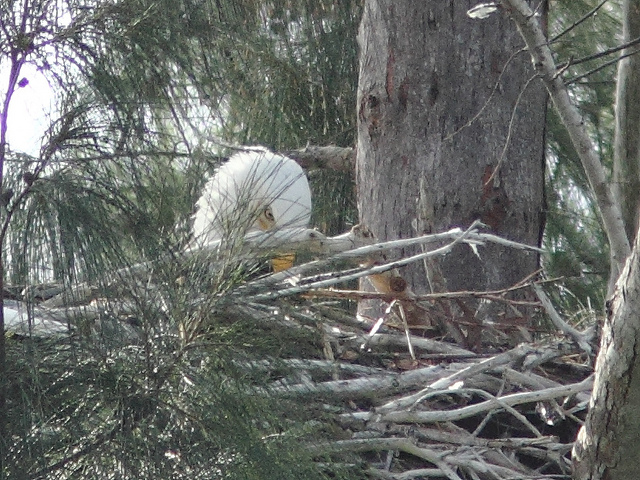 The male flew in and roosted on the horizontal branch above the nest . 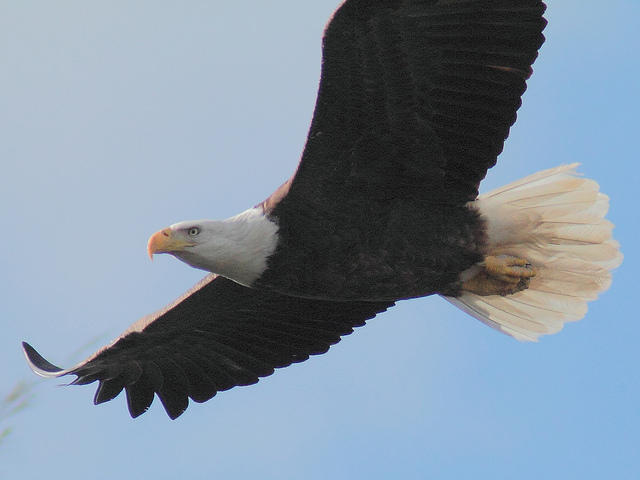  The male kept looking down into the nest. 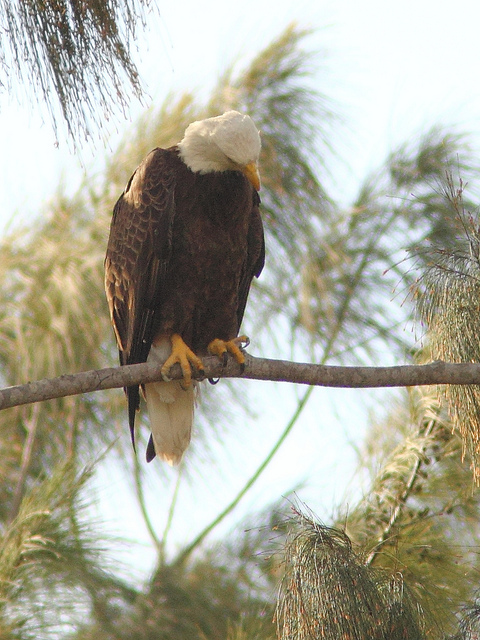 They called to each other, then the male flew out and around the back of the nest tree and landed on the right side of the nest. 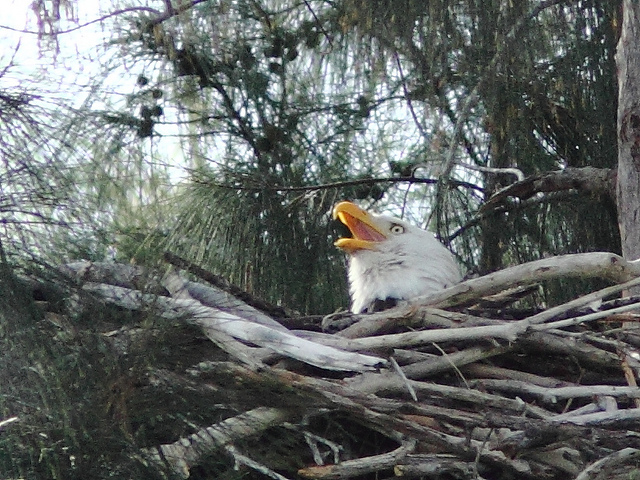 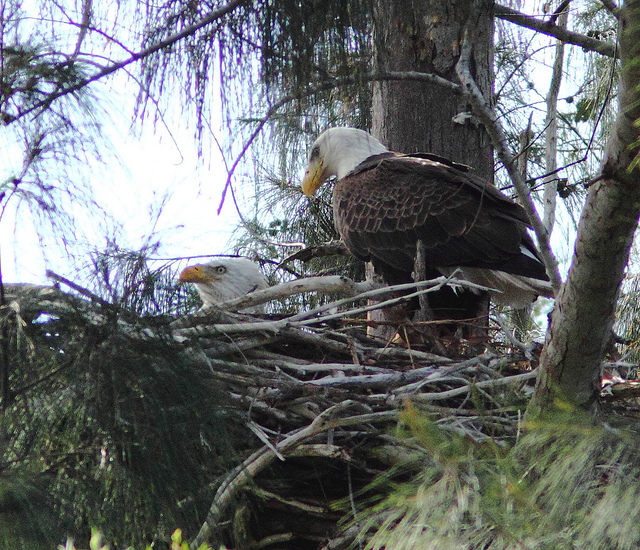 After a minute or so the female flew up to a nearby branch and the pair called to each other.  She then flew over to roost in an Australian Pine to the east of the nest. There, she preened and then flew off.  This activity strongly suggests that one or more of the eggs has hatched. We will keep a close eye on them to see if any prey is brought in and there is any evidence of feeding. A few Black Vultures circled the nest tree, suggesting that they may smell prey remains. This is interesting as well, as it could mean the first egg hatched around or before the time of Mike's observation and photos. Let's all be alert to any more evidence that there are young in the nest, and report findings here.
Ken Schneider
Web site: http://rosyfinch.com Blog: http://rosy-finch.blogspot.com Photos: <http://flickr.com/photos/rosyfinch> |
|
Sure appears that an egg has hatched! I think I will be able to visit the PP nest area this Thursday.
Got some pictures at the Melbourne nest yesterday. Will post at the other section of the Forum. Jill |
Re: December 31-- First egg has probably hatched
|
In reply to this post by NewMexiKen
I'm not an expert by anyone's stretch of imagination, but my family has been watching the eagles for 2 years now. Today I saw an adult " tending" to something in the nest. I am assuming an eaglet. Yeah! We are such armatures, but still get very excited about this. Thanks for the blog. Thanks, Stacey On Dec 31, 2012, at 7:53 PM, "NewMexiKen [via Bald Eagles of Broward County, Florida]" <[hidden email]> wrote:
|
«
Return to ARCHIVED 2012-2013 NESTING SEASON OBSERVATIONS AND PHOTOS
|
1 view|%1 views
| Free forum by Nabble | Edit this page |










